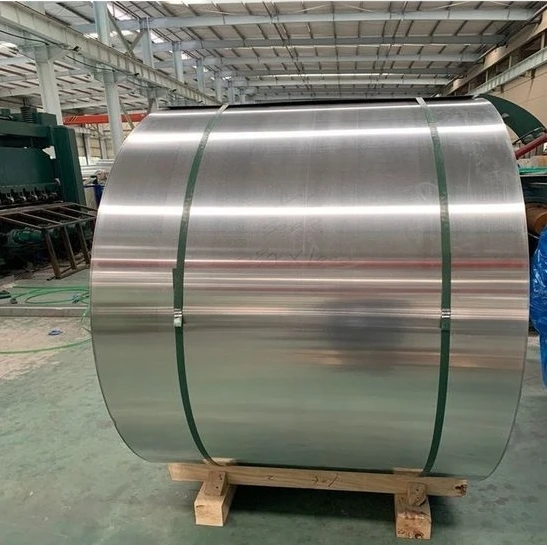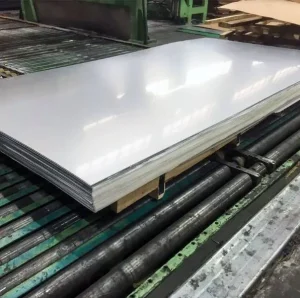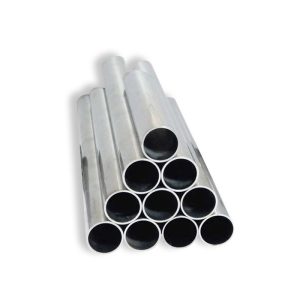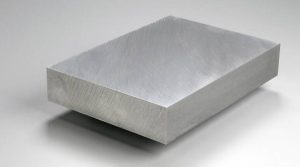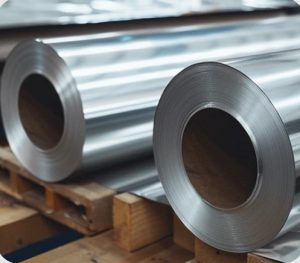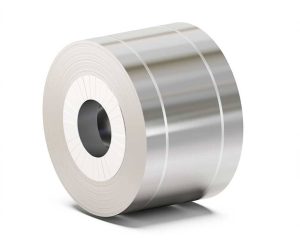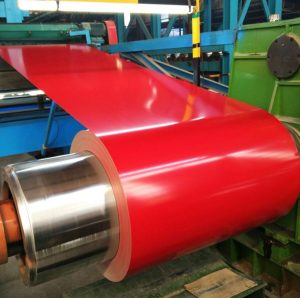Table of Contents
- Introduction to PVDF Coated Aluminium Coil
- Composition and Manufacturing Process
- Key Properties and Advantages
- Durability and Weather Resistance
- Aesthetic Flexibility and Color Range
- Environmental Benefits and Sustainability
- Cost-Effectiveness and Maintenance
- Comparative Analysis with Other Cladding Materials
- Frequently Asked Questions
- Conclusion
1. Introduction to PVDF Coated Aluminium Coil
PVDF (Polyvinylidene fluoride) coated aluminium coil has become a cornerstone material in modern construction and architectural design. Known for its exceptional durability and aesthetic appeal, it is widely used in building facades, roofing, and interior applications. The PVDF coating provides a protective layer that enhances aluminium’s innate qualities, making it suitable for a broad range of environmental conditions. This article explores the multifaceted benefits of PVDF coated aluminium coil, providing comprehensive insights for architects, engineers, contractors, and property owners.
2. Composition and Manufacturing Process
2.1 Core Material: Aluminium Coil
The core of PVDF coated aluminium coil is high-quality aluminium alloy, typically 1100, 3003, or 5052 series. These alloys are chosen for their excellent corrosion resistance, lightweight nature, and ease of fabrication.
2.2 PVDF Coating Layer
The PVDF coating layer is a fluoropolymer-based paint, usually comprising 70% polyvinylidene fluoride resin. Its application involves:
- Pre-treatment: Surface cleaning and degreasing to ensure adhesion.
- Primer Application: Promotes bonding between aluminium and coating.
- PVDF Layer Application: Usually via coil coating process, ensuring uniform thickness.
- Curing: Heating to set the coating, forming a durable, weather-resistant film.
2.3 Manufacturing Steps
- Surface Preparation: Cleaning and pre-treatment of aluminium coil.
- Coating Application: Multiple layers of primer and PVDF coating are applied.
- Curing Process: The coated coil is baked at high temperatures (~180°C).
- Rolling and Cutting: The finished coil is rolled into sheets or panels for installation.
2.4 Quality Assurance
Manufacturers perform rigorous testing, including adhesion, color consistency, and weather resistance, to ensure product longevity.
3. Key Properties and Advantages
| Property | Description | Typical Specification |
|---|---|---|
| High Weather Resistance | Withstands UV, rain, snow, and pollution | 20+ years lifespan |
| Color Retention | Maintains color vibrancy over time | Up to 25-year color warranty |
| Corrosion Resistance | Resists oxidation and corrosion | Suitable for coastal environments |
| Lightweight | Easier handling and installation | 3-4 kg/m² |
| Flexibility | Easy to form into various profiles | Bending radius as low as 1m |
| Recyclability | Environment-friendly and recyclable | 100% recyclable |
3.1 Enhanced Durability
PVDF coating provides a robust protective barrier, preventing aluminium from corrosion, especially in aggressive environments like coastal areas or industrial zones.
3.2 Superior Aesthetic Quality
The coating’s smooth finish and vibrant color options allow architects to realize innovative designs while maintaining long-term visual appeal.
3.3 Ease of Fabrication
The material’s flexibility and ease of cutting, bending, and welding make it suitable for complex architectural features.
4. Durability and Weather Resistance
4.1 UV Resistance
PVDF coatings contain fluoropolymer resins with excellent UV resistance, preventing fading and chalking even after prolonged sun exposure.
4.2 Resistance to Extreme Weather
Whether facing heavy snow, rain, or high winds, PVDF coated aluminium coils stand resilient, thanks to their high-performance coating and corrosion-resistant core.
4.3 Salt Spray Resistance
In coastal regions, salt spray can accelerate corrosion. PVDF coatings offer superior resistance, extending the lifespan of aluminium cladding.
4.4 Impact Resistance
The coating provides a tough surface that resists scratches and minor impacts, reducing maintenance needs.
4.5 Fire Safety
While aluminium itself is non-combustible, PVDF coatings are formulated to meet fire safety standards, minimizing fire hazards.
5. Aesthetic Flexibility and Color Range
5.1 Wide Spectrum of Colors
PVDF coated aluminium coils are available in hundreds of colors, including metallic, matte, and gloss finishes, enabling diverse architectural expressions.
5.2 Customization Options
- Textures: Embossed, matte, or high-gloss finishes.
- Patterns: Customized designs for branding or artistic purposes.
- Color Matching: Precise color matching for project consistency.
5.3 Long-Term Color Stability
The chemical stability of PVDF ensures that colors stay vibrant and fade-resistant for decades, maintaining building aesthetics.
5.4 Design Flexibility
The coating’s adaptability allows for intricate architectural details, curved surfaces, and large-scale facades.
6. Environmental Benefits and Sustainability
6.1 Eco-Friendly Manufacturing
Modern PVDF coating processes utilize environmentally responsible techniques, with low VOC emissions and waste reduction.
6.2 Recyclability
Both aluminium core and PVDF coating are recyclable, aligning with sustainable building practices.
6.3 Energy Efficiency
PVDF coated aluminium can contribute to energy-efficient building envelopes by reflecting solar radiation and reducing cooling loads.
6.4 Certification and Standards
PVDF coated aluminium products often meet international standards such as LEED, BREEAM, and Green Building certifications, emphasizing their eco-friendly attributes.
7. Cost-Effectiveness and Maintenance
7.1 Initial Investment
While PVDF coated aluminium may have a higher upfront cost compared to other materials, its longevity and reduced maintenance costs offset initial expenses.
7.2 Low Maintenance Requirements
Cleaning with water and mild detergents is sufficient to preserve appearance and performance, reducing ongoing maintenance costs.
7.3 Longevity
A lifespan of over 20 years with minimal degradation makes it a cost-effective choice for long-term projects.
7.4 Repair and Replacement
Localized repairs are feasible without replacing entire panels, thanks to the coating’s adhesion properties.
8. Comparative Analysis with Other Cladding Materials
| Material | Durability | Aesthetic Flexibility | Cost | Maintenance | Environmental Impact |
|---|---|---|---|---|---|
| PVDF Coated Aluminium | Very High | Extensive | Moderate-High | Low | Recyclable |
| Vinyl Cladding | Moderate | Moderate | Low | Moderate | Less eco-friendly |
| Fibre Cement | High | Moderate | Moderate | Moderate | Eco-friendly |
| Steel Panels | High | Moderate | High | Moderate | Recyclable |
| Natural Stone | Very High | Limited | Very High | High | Recyclable |
This comparison highlights PVDF coated aluminium’s superior combination of durability, aesthetics, and sustainability.
9. Frequently Asked Questions
Q1: What makes PVDF coating superior to other types of coatings?
Answer: PVDF coatings contain fluoropolymer resins that provide exceptional UV resistance, chemical stability, and color retention. Unlike polyester or acrylic coatings, PVDF resists chalking, fading, and corrosion over decades, making it ideal for long-term building applications.
Q2: How long does PVDF coated aluminium typically last?
Answer: Under proper maintenance, PVDF coated aluminium can last 20-30 years or more. Its resistance to weathering, UV exposure, and corrosion ensures minimal degradation over time.
Q3: Is PVDF coated aluminium suitable for coastal or industrial environments?
Answer: Yes. PVDF coatings are designed to withstand harsh environments, including salt spray and industrial pollutants. They are widely used in coastal buildings and industrial facilities due to their superior corrosion resistance.
Q4: Can PVDF coated aluminium be recycled after its lifespan?
Answer: Absolutely. Both the aluminium core and PVDF coating are recyclable. Recycling aluminium saves energy and reduces environmental impact, aligning with green building standards.
Q5: How does the coating process affect the environmental footprint?
Answer: Modern PVDF coating processes employ low VOC emission techniques and waste recycling, reducing environmental impact. Additionally, the longevity of the coated aluminium reduces the need for frequent replacement.
Q6: What maintenance practices are recommended for PVDF coated aluminium?
Answer: Routine cleaning with water and mild detergents is sufficient. Avoid abrasive cleaners or harsh chemicals. Periodic inspections should be conducted to check for damage or scratches, which can be repaired locally to maintain performance.
Q7: Are there any limitations or disadvantages to using PVDF coated aluminium?
Answer: While highly durable, PVDF coated aluminium can be more expensive than other cladding options. Additionally, improper installation or manufacturing defects can compromise performance, so selecting reputable suppliers and professional installers is crucial.
Q8: How does PVDF coated aluminium compare in fire safety?
Answer: Aluminium itself is non-combustible, but PVDF coatings are formulated to meet fire safety standards, such as Class A fire ratings. Proper testing and certification ensure compliance with building codes.
10. Conclusion
PVDF coated aluminium coil has revolutionized modern architecture by offering unmatched durability, aesthetic versatility, and environmental benefits. Its resistance to weathering, UV radiation, and corrosion ensures that buildings maintain their appearance and structural integrity for decades. The extensive color options and customization capabilities allow architects to push creative boundaries. Moreover, its eco-friendly nature and recyclability align with sustainable building practices. While initial costs may be higher, the long-term savings in maintenance and replacement make PVDF coated aluminium a cost-effective choice for diverse construction projects.


